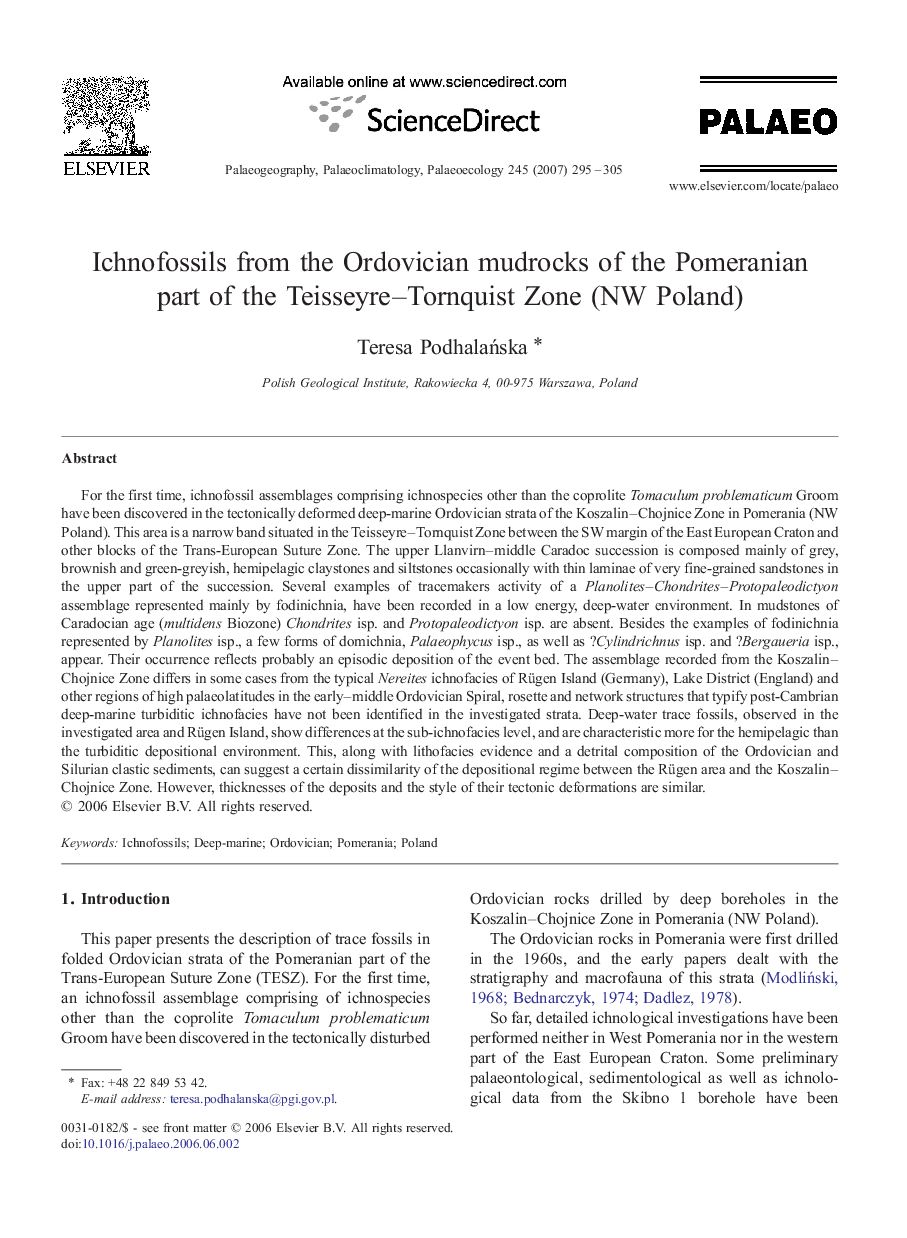| Article ID | Journal | Published Year | Pages | File Type |
|---|---|---|---|---|
| 4469180 | Palaeogeography, Palaeoclimatology, Palaeoecology | 2007 | 11 Pages |
Abstract
For the first time, ichnofossil assemblages comprising ichnospecies other than the coprolite Tomaculum problematicum Groom have been discovered in the tectonically deformed deep-marine Ordovician strata of the Koszalin-Chojnice Zone in Pomerania (NW Poland). This area is a narrow band situated in the Teisseyre-Tornquist Zone between the SW margin of the East European Craton and other blocks of the Trans-European Suture Zone. The upper Llanvirn-middle Caradoc succession is composed mainly of grey, brownish and green-greyish, hemipelagic claystones and siltstones occasionally with thin laminae of very fine-grained sandstones in the upper part of the succession. Several examples of tracemakers activity of a Planolites-Chondrites-Protopaleodictyon assemblage represented mainly by fodinichnia, have been recorded in a low energy, deep-water environment. In mudstones of Caradocian age (multidens Biozone) Chondrites isp. and Protopaleodictyon isp. are absent. Besides the examples of fodinichnia represented by Planolites isp., a few forms of domichnia, Palaeophycus isp., as well as ?Cylindrichnus isp. and ?Bergaueria isp., appear. Their occurrence reflects probably an episodic deposition of the event bed. The assemblage recorded from the Koszalin-Chojnice Zone differs in some cases from the typical Nereites ichnofacies of Rügen Island (Germany), Lake District (England) and other regions of high palaeolatitudes in the early-middle Ordovician Spiral, rosette and network structures that typify post-Cambrian deep-marine turbiditic ichnofacies have not been identified in the investigated strata. Deep-water trace fossils, observed in the investigated area and Rügen Island, show differences at the sub-ichnofacies level, and are characteristic more for the hemipelagic than the turbiditic depositional environment. This, along with lithofacies evidence and a detrital composition of the Ordovician and Silurian clastic sediments, can suggest a certain dissimilarity of the depositional regime between the Rügen area and the Koszalin-Chojnice Zone. However, thicknesses of the deposits and the style of their tectonic deformations are similar.
Related Topics
Physical Sciences and Engineering
Earth and Planetary Sciences
Earth-Surface Processes
Authors
Teresa PodhalaÅska,
